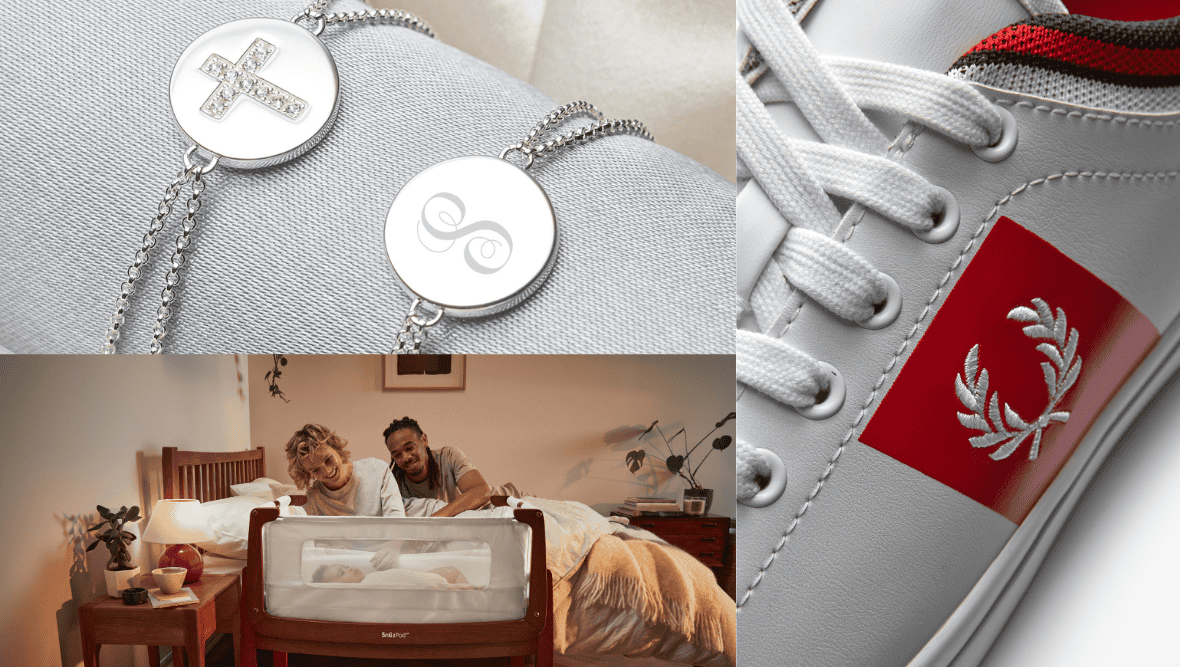
For all of the new photographers out there, let’s bring it back to basics and uncover the main types of e-commerce photography and how you can use them.
In a nutshell, there are three main styles:
- White background photography: Provides a clear, distraction-free look at the product.
- Lifestyle photography: Helps customers visualise products in real-life settings.
- Detailed close-ups: Allow for a closer examination of product features.
Each style offers distinct advantages, so it's essential to understand your options to help you choose the best approach for your products.
Let's take a look at each:
White Background Photography
White background photography does precisely what it says on the tin.
It's a technique in which the subject (e.g. your product/s) is photographed against a plain white background. This often creates a clean, distraction-free image, allowing users to focus entirely on the product details.
White background photography is a mainstay in e-commerce photoshoots and offers multiple benefits.
Not least, it provides a clear canvas for shoppers to easily see your products and provides a simple means for photographers to create polished and professional-looking e-commerce catalogues.
Lifestyle Photography
Lifestyle photography isn't just about showcasing products in relatable, real-life scenarios. It's about fostering an emotional connection with your customers, inspiring them to see how your products can enhance their daily lives.
One example of lifestyle photography is model photography, in which the model shows the product being used, worn, consumed, etc.
As you've undoubtedly seen before, these kinds of e-commerce photos are particularly popular in fashion photography.
In summary, this kind of brand photography adds a layer of authenticity and relatability to product images, making them more appealing and engaging.
The knock-on effect? This can evoke emotions in shoppers that positively influence their buying decisions.
Detailed Close-ups
High-quality close-ups work wonders for providing a detailed view of your wares. Such shots are crucial for customer decision-making, as they help to communicate your product’s quality.
Ultimately, close-ups taken from multiple angles can be the key to unlocking customer confidence, which drives sales.
Not only that, but detailed shots can also reduce the likelihood of product returns—because customers know exactly what they'll get!
Editing and Post-Production
Post-production editing is crucial in ecommerce photography. It's the catalyst that transforms raw snapshots into sleek, professional-looking photos.
Popular software for retouching images includes Adobe Photoshop, Lightroom, and Capture One, each offering a range of tools to enhance your photos.
A typical editing workflow includes adjusting the image for brightness and contrast, cropping, and colour correction. Batch editing tools allow photographers to process multiple photos efficiently, ensuring consistency across your product line.
Pro Tip: Using a white backdrop can simplify post-production by making removing unwanted objects easier.
Optimising Photos for Different Platforms
Optimising e-commerce product photography for different online selling platforms and devices is imperative to ensure an appealing presentation across the board.
Each e-commerce platform has specific requirements for its product images, and adhering to these guidelines will enhance your user experience. For instance, Shopify recommends square pictures of 2048 x 2048 pixels in a JPEG file format (due to its balance of compression and quality).
Elsewhere, Amazon requires high-resolution images that occupy at least 85% of the frame.
Suppose you're unsure what the specifications are for product photography on your preferred e-commerce platform. In that case, it's worth contacting them or referring to their online support materials.
Pro Tip: The same applies to social media. Make sure you upload product images that align with their suggested dimensions.
Now you know all the different types of e-commerce photography, are you ready to elevate your product imagery? Contact us today for more information about our photography services.
